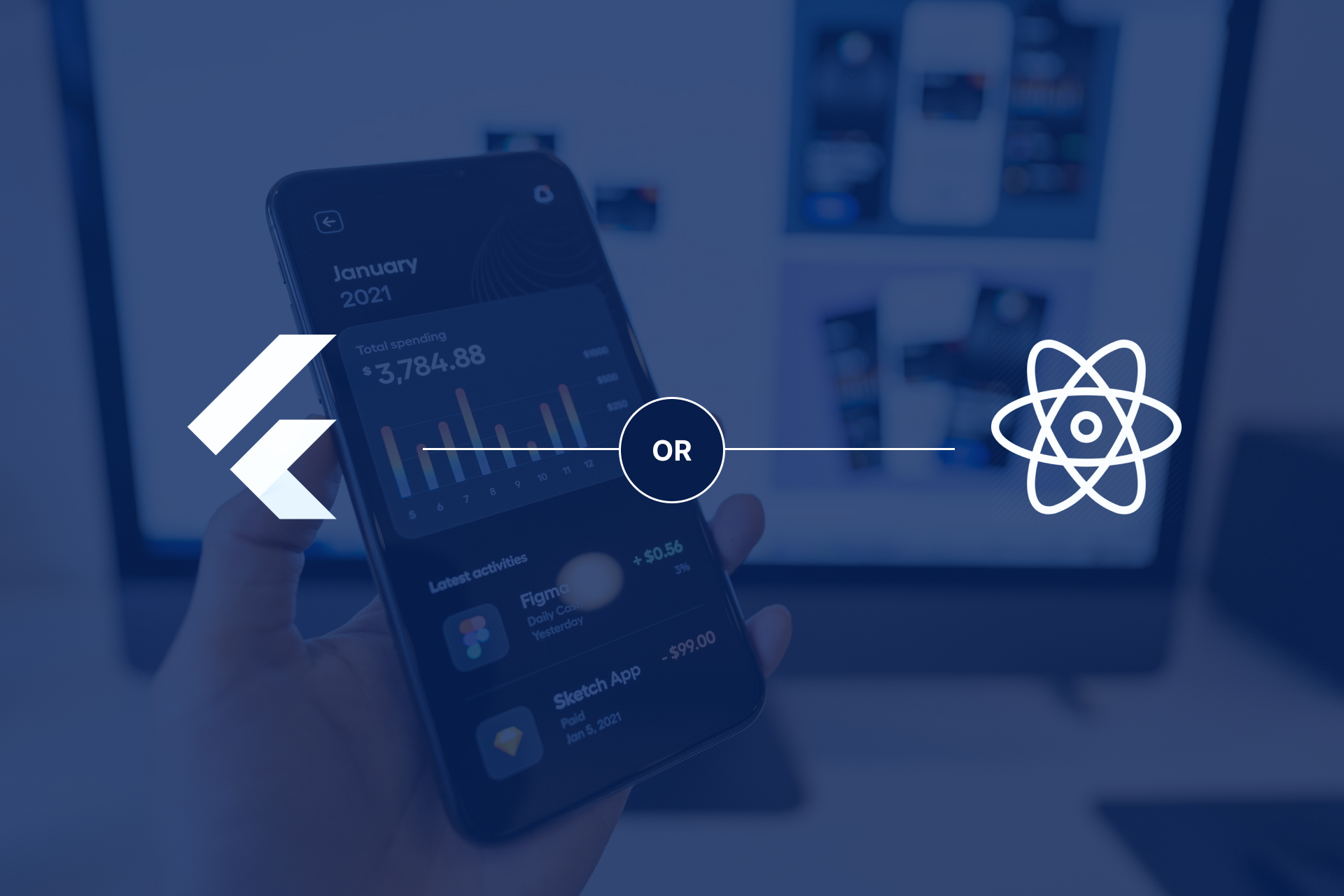- March 07, 2023 6:01 am
- by Ajanth
- March 07, 2023 6:01 am
- by Ajanth

The market for mobile app development is expanding quickly, especially due to COVID-19's need for specialized lifestyle and communication apps. However, creating apps for iOS and Android requires two distinct departments and skill sets. The world is becoming more and more digital, and there isn't a single task that an application cannot accomplish. Businesses now have to release applications that live up to customers' requirements in a short amount of time.
If you're looking to build a cross-platform app, Flutter and React Native are the leading options. Both React and Flutter have advanced significantly in response to the demand for tools that support developers in building robust and engaging applications But which of these two would be the best technology for a mobile app owner to choose from? Which would be a better choice, in the eyes of app owners: employing React native developers or selecting a Flutter app development company? To learn more about this response, keep reading this blog.
In May 2017, Google Officially launched Flutter, a free and open-source platform for mobile user interfaces. It enables you to develop a native mobile application using just one codebase. Accordingly, you can design two different apps using a single codebase and programming language (for iOS and Android).
React Native is a JavaScript framework for creating genuine, natively rendered mobile applications for iOS and Android. Although it is built on React, Facebook's JavaScript toolkit for creating user interfaces, it focuses on mobile platforms instead of browsers. In other words, using the renowned JavaScript library, web developers can now create mobile applications that actually appear and feel "native." Furthermore, React Native makes it simple to concurrently build for Android and iOS while the majority of the code you write can be used across platforms.
With over 500,000 apps already developed on Flutter and ongoing backing from a global powerhouse like Google, this most recent release will eventually push that value up. The Flutter SDK is updated each month as a result of Google's initiatives to enhance the Flutter tools. Flutter online has also been offered in addition to mobile devices. (Because it was released in beta on the stable channel) And as mentioned, it is being used by top companies, which also foresees well for the upcoming years. The extensive re-architecture is beginning to take center stage for React Native. Improvements are always being made by developers. And some of the better results are Hermes and other major enhancements to React native.
The two top cross-platform application development frameworks are Flutter and React Native. Despite the fact that both frameworks are relatively new, professionals have embraced them. However, there is also competition between Flutter and React Native to establish which is better. This blog compares Flutter with React Native exclusively and illuminates numerous factors to determine which framework is more favorable for your project. Our research indicates that while both Flutter and React Native are excellent, their use cases are not similar. A variety of considerations determines your choice of selecting a certain framework. For example, Flutter is the best solution for you to choose if you intend to rapidly construct cross-platform mobile applications that are on match the native apps when it comes to functionality. On the other hand, React Native is your best option if you want to develop and deploy mobile applications with plenty of features and functions.
Guaranteed Response within One Business Day!

How Much Does It Cost to Design an App?

Angular Best Practices For Web Applications

How to Set Up a Development Environment in React.JS?

What are the 6 Models Used In SDLC?

Why React Front-End Development is the Best